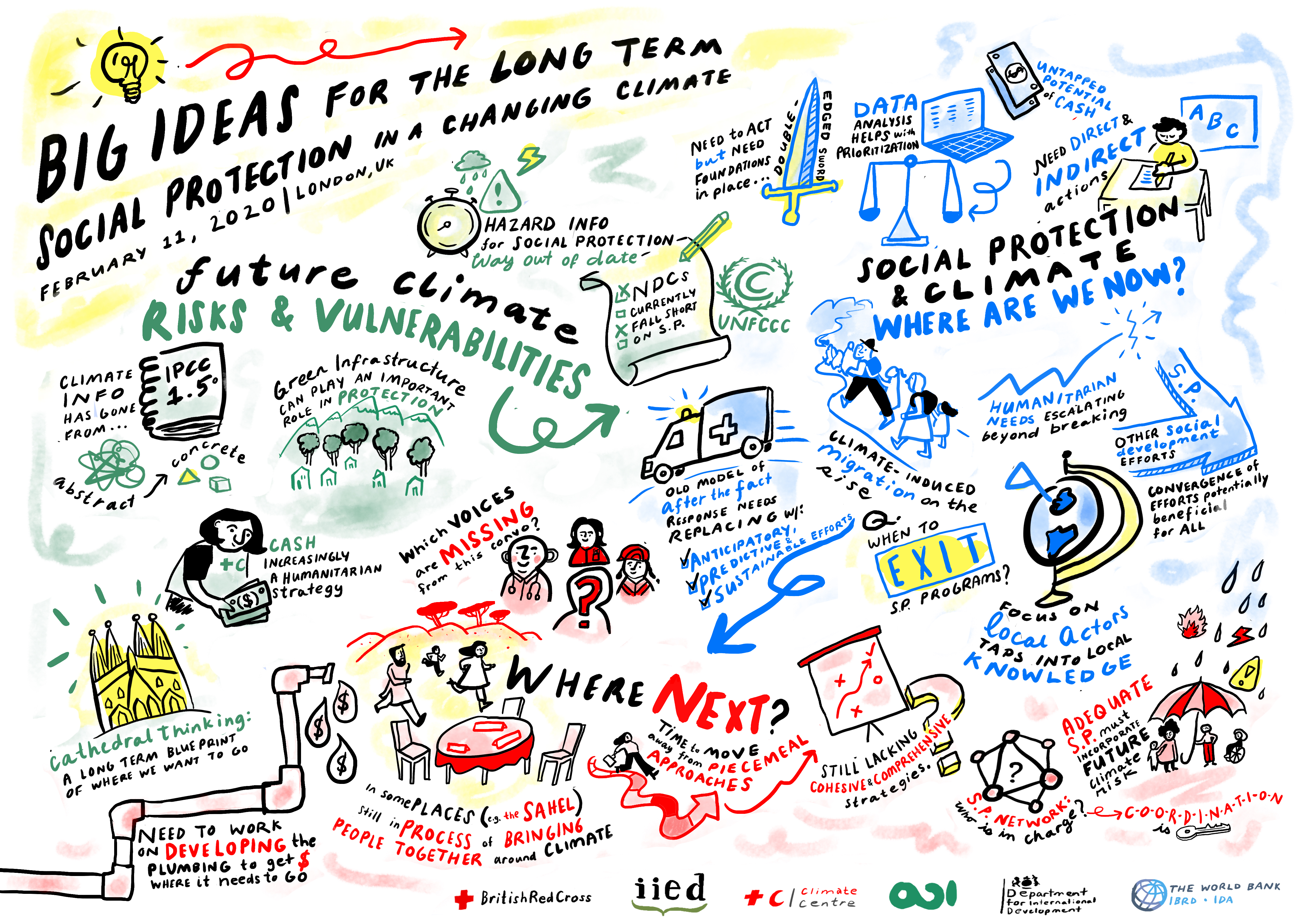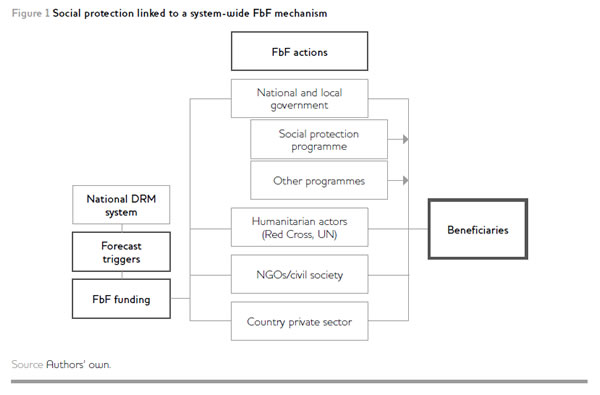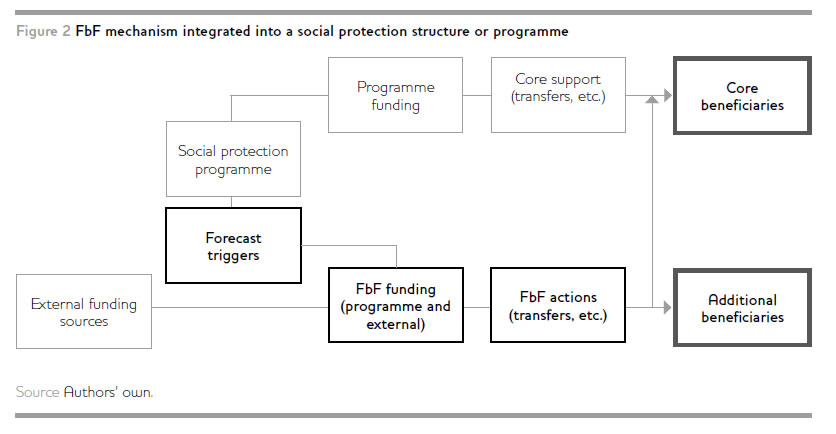Summary
What is social protection and how is it relevant to the work of the RCM and other humanitarian organizations on FbF?
Scaling up and embedding the FbF approach into national risk management structures is important for its sustainability and effectiveness. Taking anticipatory action depends on the capacity of the system to pre-identify potential impacts and people that will need support, to effectively implement actions in the short window of time between a forecast and the occurrence of the hazard.
With increasing climate related risks, climate-sensitive social protection (SP) approaches are becoming relevant as they can help protect people from the impacts of climate shocks and stressors, protecting their assets and livelihoods. This note provides a synthesis of the main opportunities and challenges in linking FbF with SP and offers guidance on how to National Societies and other humanitarian partners can support this integration.
Social protection is a broad term to describe national and sub-national programmes and policies that aim to tackle poverty, inequality and vulnerability by helping people manage short and long- term risks. Social protection policies and programmes are part of a national system intending to reduce poverty, deprivation and vulnerability by helping people manage various risks. This system includes:
- Social assistance or safety nets: cash transfers, cash-for-work programmes and temporary employment programmes, school feeding programmes
- Social insurance: pensions; health, unemployment or disaster insurance
- Labour market interventions: job market integration, job benefits, labour standards
- Social services: social care, nutrition services, disability services
In this note, we are only going to primarily consider one type of social protection, namely social assistance, whose instruments overlap the most with those used by humanitarians. Activities like cash transfers, cash-for-work and school feeding programmes are part of the usual activities in emergency response, and now also of the FbF approach. However, social services, social insurance and others might also be relevant. In a social protection system, the focus however, is on a national system, with multi-year funding (eventually by domestic funds) to manage both short and long term risks in a predictable and financially sustainable manner. Social protection transfers are usually provided as predictable, long-term support to households at risk of falling into poverty. This kind of support can be delivered through different means such as direct cash, vouchers, digital payments, or mobile money. Some social transfers such as school feeding are delivered in-kind.
Shock-responsive and climate sensitive social protection approaches include flexible, scalable programs that quickly reach those affected by a shock. For instance, a program that delivers cash transfers after a shock can help vulnerable households avoid negative coping-strategies.


